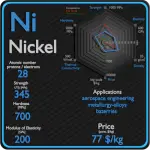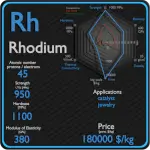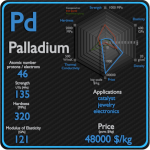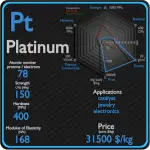This article contains comparison of key thermal and atomic properties of silver and platinum, two comparable chemical elements from the periodic table. It also contains basic descriptions and applications of both elements. Silver vs Platinum.

Silver and Platinum – About Elements
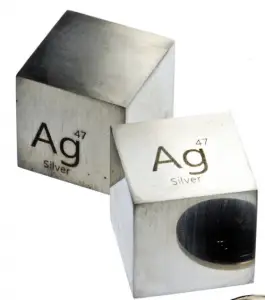
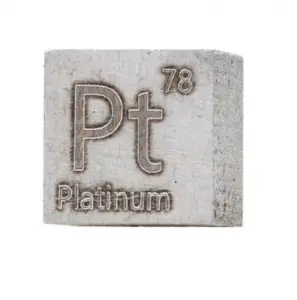
Source: www.luciteria.com
Silver and Platinum – Applications
Silver
Silver has long been valued as a precious metal. Silver metal is used in many bullion coins, sometimes alongside gold. Silver has many important, far-reaching technological and electronic applications. It’s used in everything from cell phones, computers and semiconductors to automobiles, water-purification systems and—because it is the best conductor of heat of all elements—spacecraft solar radiation tiles. Silver is of the upmost importance in photography (where approximately 30% of the U.S. Industrial consumption goes into this application). The medical uses of silver include its use in wound dressings, creams, and as an antibiotic coating on medical devices. Wound dressings containing silver sulfadiazine or silver nanomaterials may be used on external infections.
Platinum
Platinum is primarily an industrial metal. It is a critical material for many industries and is considered a strategic metal. Platinum is used as a catalyst, platinum is mostly found in vehicle catalytic converters that reduce toxic exhaust chemicals, and also in fuel cells to increase efficiency. The most common use of platinum is as a catalyst in chemical reactions, often as platinum black. In catalytic converters, platinum allows the complete combustion of low concentrations of unburned hydrocarbons from the exhaust into carbon dioxide and water vapor. Platinum has been used in thermocouple devices that measure temperature with high accuracy. Platinum is a component in magnetic coatings for high-density hard disk drives and some of the newer optical storage systems.
Silver and Platinum – Comparison in Table
| Element | Silver | Platinum |
| Density | 10.49 g/cm3 | 21.09 g/cm3 |
| Ultimate Tensile Strength | 110 MPa | 150 MPa |
| Yield Strength | 45 MPa | 70 MPa |
| Young’s Modulus of Elasticity | 83 GPa | 168 GPa |
| Mohs Scale | 3.25 | 3.5 |
| Brinell Hardness | 210 MPa | 400 MPa |
| Vickers Hardness | 251 MPa | 550 MPa |
| Melting Point | 961.78 °C | 1772 °C |
| Boiling Point | 2162 °C | 3827 °C |
| Thermal Conductivity | 430 W/mK | 72 W/mK |
| Thermal Expansion Coefficient | 18.9 µm/mK | 8.8 µm/mK |
| Specific Heat | 0.235 J/g K | 0.13 J/g K |
| Heat of Fusion | 11.3 kJ/mol | 19.6 kJ/mol |
| Heat of Vaporization | 250.58 kJ/mol | 510 kJ/mol |


